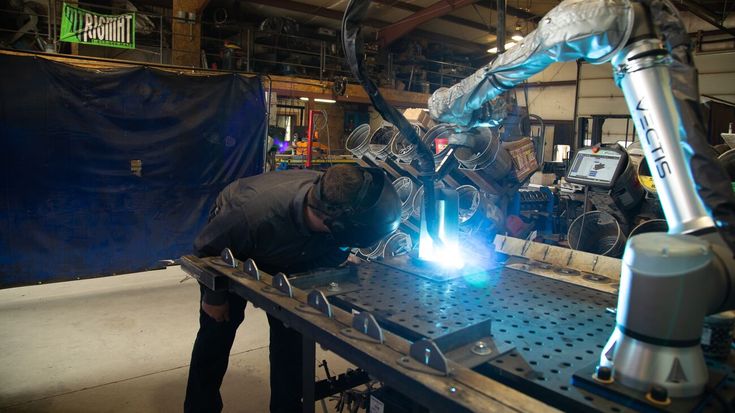A common response to the welder shortage is to schedule more overtime to increase production volumes. While this approach can be effective in the short term, it is very difficult to sustain over weeks and months. This topic was first studied in 1947 by the US Department of Labor investigating defense production at the end of WWII. They found a drop in productivity as overtime hours increased, from an 8% drop at 50 hours to a 22% drop at 70 hours. In a 2020 study, John Pencavel from Stanford University found a 10% increase in OT hours dropped overall productivity by 2.4%, and at hours over 55 per week, the productivity drop was 24%. This was futher confirmed in a study by J. Nevision from OAK Associates, who found a 25% drop in productivity at 60 hours per week.
The reductions in productivity are just the tip of the iceberg, as mental health, family stability, worker safety, job satisfaction and turnover all suffered at higher levels of overtime. The total cost in this competitive labor market is significant.
Higher Productivity Please
With no immediate solution to the welder shortage in sight, the challenge is to boost productivity and output with the existing manufacturing team. And that’s where robotic welding comes in.
Automation investments to boost productivity are not new – arc welding robots have been on the market since the late 1970’s. But the traditional robot approach to automated welding has very real limitations, including
- Floor space – safety guarding required by traditional automation consumes large chunks of manufacturing floor space.
- Complexity – traditional robots are difficult to program, operate and maintain. Small shops just don’t have the skilled resources to dedicate to traditional automation, and large shops don’t want the expense.
- Lead times – traditional automation lead times are typically 3-5 months, an eternity for a shop fighting labor challenges day to day.
- Limited flexibility – traditional robots are difficult to move to a new location, and to re-program for new parts, limiting the overall efficiency.
- Total cost – given all the above points, traditional robot welding is an expensive investment that is difficult to justify.
Which brings us to collaborative robot welding, which first hit the market in late 2018. Cobot welding has significant advantages over traditional robotic welding:
- Floor space is not an issue. With a proper risk assessment and operator PPE, cobot welders can be deployed throughout manual weld lines with no safety fences, interlock or barriers. Quite often cobot welders can utilize existing tooling and fixturing.
- UR based cobot welding solutions can be programmed and operated by welders, not robot engineers.
- Long lead times are in the past. UR cobot welding solutions can be in production in weeks, not months. PO to Production in 3 or 4 weeks is common.
- Simple programming delivers maximum flexibility. The old adage “I can weld it before you can program it” is no more. New parts can be programmed in minutes, maximizing flexibility.
- Total cost is typically 1/3 to ½ that of traditional automation. And with short lead times, UR cobot welding solutions deliver ROI in record time.


